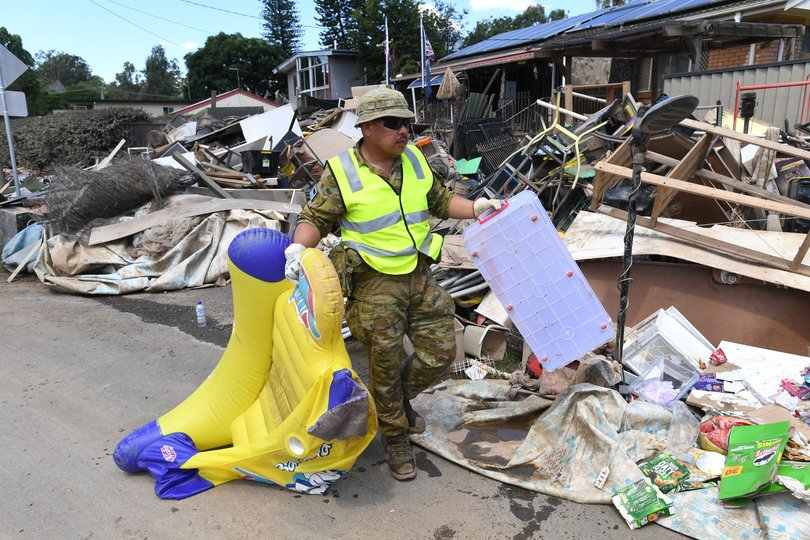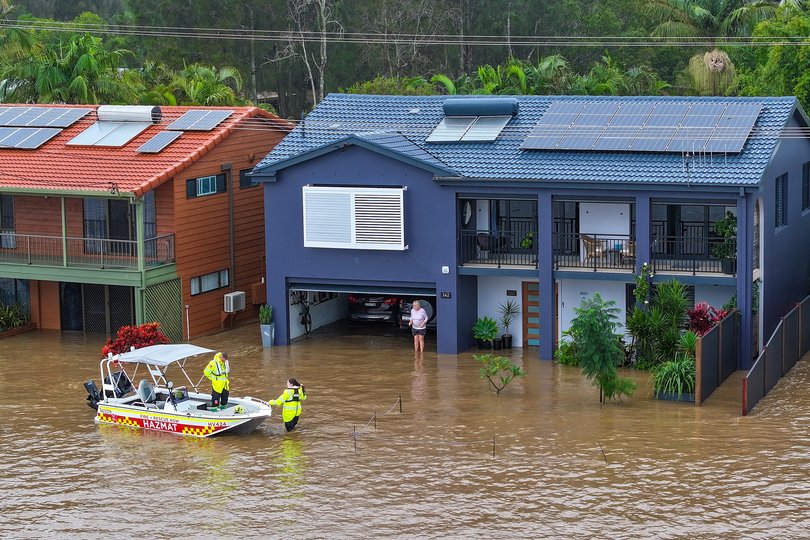Australia’s crisis response is a disaster

Australia is drowning — literally and institutionally. The latest floods across NSW, from the Mid North Coast to the Hunter Valley, are a grim reminder that climate disasters are no longer seasonal anomalies, but the new normal. Yet our response is stuck in a different century.
As floodwaters rise, the nation again turns to the Australian Defence Force. Soldiers are flown into devastated towns, pulling people from rooftops and clearing debris from sodden roads. They do this admirably. But let’s be clear: this is not their job. As one Mid North Coast local told a reporter this week: “We shouldn’t be relying on the military for this.” He’s right.
Sign up to The Nightly's newsletters.
Get the first look at the digital newspaper, curated daily stories and breaking headlines delivered to your inbox.
By continuing you agree to our Terms and Privacy Policy.Australia’s disaster model is fundamentally broken. We wait for catastrophe, then scramble. We rely on exhausted, often elderly volunteers, backpackers, and soldiers whose core mission is national defence, not disaster recovery. It’s time to stop improvising and start planning.
The solution is obvious: we need a dedicated, professional civilian disaster resilience corps. A paid, flexible workforce — trained (and training others), equipped, and ready to respond to floods, fires, droughts, and cyclones. Not just to clean up, but to prepare communities, build infrastructure, and create long-term resilience in regions on the climate front lines.
The status quo is as inefficient as it is unjust. Deploying the ADF for civilian disaster relief has become routine, not exceptional. In the current NSW floods, troops have again been dispatched after days of delay, with reports of poor co-ordination and limited capacity. We use the ADF because it’s the only organisation with deployable sovereign capability, but it’s not built for this work. It is expensive, reactive, and diverts resources from the ADF’s real responsibilities.

Meanwhile, the volunteer ranks of the SES are stretched to breaking point. These Australians, many past retirement age, give their time selflessly but are being asked to carry the climate burden without proper support. Then there’s the disturbing trend of using backpackers and seasonal visa workers to help rebuild towns. Cheap labour is not climate adaptation.
This approach is inadequate and it’s irresponsible. Climate disasters are predictably frequent. Their social, economic, and security costs are mounting. Yet we continue to act as if each event is an isolated tragedy rather than a structural challenge requiring a structural response.
An alternative National Disaster Resilience Corps would be built for the climate age, a mixed workforce of Australians based in disaster-prone regions, trained through TAFE, and employed full, part-time, or on a stand-by basis similar to the Army Reserves, to do the essential work of protecting communities and rebuilding when disaster strikes. Such a corps could provide tens of thousands of secure jobs across a range of fields: logistics, emergency response, community health, construction, communications, and planning. Paid training to anyone who committed to a reserves unit and deployed when needed could act almost like a jobs guarantee.
The economic logic is compelling. Climate disasters are inflation events. Watch the price of milk this month. Insurance was already one of the most inflation-prone industries. Every dollar spent on disaster preparedness saves many more in avoided damage, lost productivity, and social dislocation. Think of it as infrastructure investment in human capability. The policy benefits are manifold: working towards full employment through socially vital work; regional revitalisation with jobs anchored in disaster-prone areas; gender equity, with caregiving and health roles central; as well as offering new career paths for workers in declining sectors.
The corps would stimulate sovereign capability in industries vital for response and recovery. We don’t just need to train and co-ordinate people; we need to equip them. Boats, drones, PPE, mobile clinics, and communications gear are not just emergency tools, they are manufacturing opportunities. Local procurement would create new supply chains, industry and jobs.

We should also be thinking globally. Our Pacific neighbours tell us that climate change is their number one security threat. A well-resourced Australian disaster corps would be regional diplomacy, offering support during crises, and training and equipment in preparation.
The NDRC would necessarily involve national leadership and co-ordination, through a dedicated Federal agency working alongside State and local government and frontline communities. Resilience planning would be embedded in housing, transport and infrastructure projects. Importantly, it would involve a lot of basic skills training and co-ordination. The reason we always turn to the ADF is their logistical capacity. We need a civilian agency that can carry that burden.
This isn’t fantasy. It’s the kind of bold, pragmatic nation-building Australians have always done when the stakes are high. Think of the Snowy Hydro scheme, post-war car industry, superannuation, or the NBN. Each was a response to a national challenge. Climate change is no different. We have the skills. We have the need. What’s missing is political imagination.
Let’s build our National Disaster Resilience Corps. Not after the next flood or fire. Now.
Nick Dyrenfurth is the executive director of the John Curtin Research Centre. Dominic Meagher is its deputy director and chief economist
